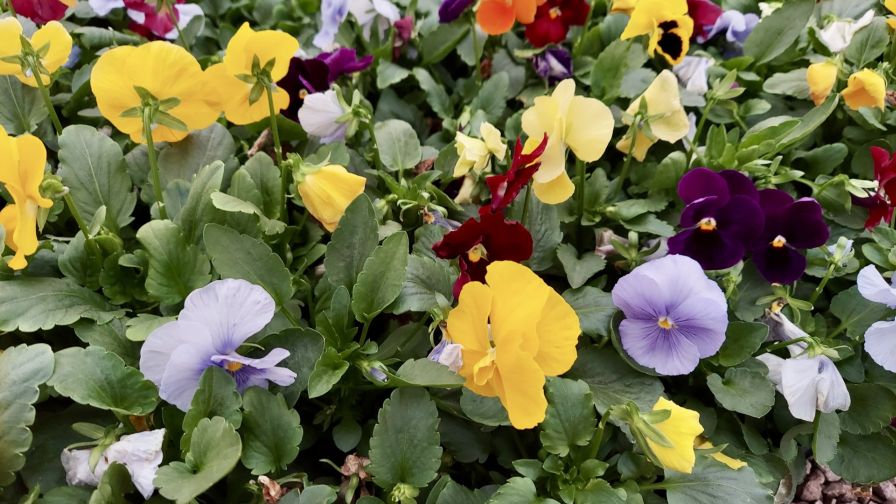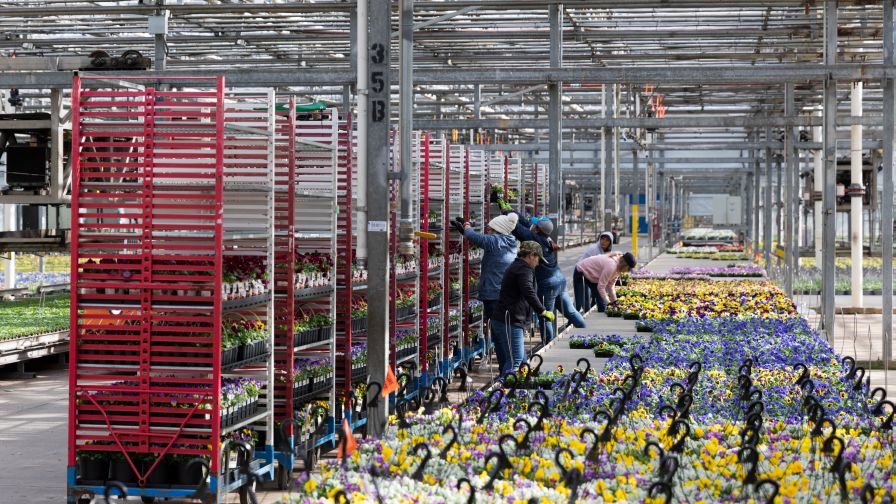Social Media Isn’t Just For Retailers Anymore
Bell Nursery CEO Gary Mangum received conflicting advice on the merits of social media from the people around him who know it best: his kids.
“My then 14-year-old let me know Facebook was no place for an old person,” Mangum says. “And my then 28-year-old daughter told me we ought to be on Facebook to capture the young people.”
Mangum, whose company produces plants solely for Home Depot, started out on Facebook with just a personal account to catch up with old friends “with the side benefit of keeping up with the children.” But he soon realized there was a natural extension to the business in communicating directly with the end consumer.
He set up the Bell Nursery page about 18 months ago to drive end consumers to either Home Depot stores or the retail giant’s Garden Club website. Right now there are about 3,000 people who “like” the Bell Nursery page, which means those consumers see any photos, videos, status updates or other information posted to the Bell Facebook page.
“For our own business it warrants additional investment: monetary, people and time,” Mangum says. “I think for us it’s easy because we have one customer, and we’re trying to push people into Home Depot. If we had 30 customers, it would be more difficult to create action on the consumer side.”
And while it can be tricky, some growers are finding ways to have a meaningful presence on social media channels. Here’s how.
Becoming A Consumer Resource
In the past, growers had the unique position of growing the plant material, but not having a vehicle to tell the general public how to use their product aside from the mere inches of a plant tag. With social media, though, those days are gone.
“It’s not a technology; it’s information content,” says Marta Maria Garcia, marketing director at Costa Farms, which has implemented a full social media strategy aimed at Facebook, Twitter, YouTube and the photo-sharing site Flickr. “It’s at the core of our social sites and website: information. It’s power, and we have a product where the consumer is hungry for the very basics: ‘how do I water this,’ or ‘what goes well with this?’
“Social is the best option because the consumer utilizes it extensively. They share with peers and when they have a question they go online.”
Terra Nova Nurseries also has implemented a social media strategy and uses internal personnel such as IT Manager Josh Blair, who works with Eberly & Collard Public Relations to coordinate posts.
Eberly & Collard’s Don Eberly recalls a story that illustrates the benefits of social. On the Terra Nova Facebook page, a consumer asked about a specific plant and the risk of overwatering it. Eberly and Blair coordinated with one of the breeders at the company to answer the question and include the information that the plant is resistant to fungus. So social becomes a way to not only answer questions, but to get across specific variety information that likely would have gotten lost otherwise. And everyone who “likes” Terra Nova sees that information.
“All of us in the industry talk about interacting with people to get them excited about plants again,” Eberly says. “This is one great way for a grower or retailer to do just that – get down and dirty on a personal level and talk to folks instead of just marketing messages.”
Using Social Properly
The use of marketing messages in social brings up a great point. There is a time and place for everything, and social media channels are generally not the place to go all marketing message on consumers. In fact, it’s the fastest way to get someone to “unlike” you on Facebook, or “unfollow” you on Twitter. (If these phrases are a foreign language to you, check out Social Media 101).
Instead, view it as an opportunity to have a casual conversation about plants with someone. And go with the flow, Eberly says. “It’s an open book. When you have a social networking channel, the word that always comes to mind is ‘transparency,’” he adds. “Some find it can be scary at times to be this open, but we all know this is the way communication is moving. The consumer has spoken and has said I want full disclosure from the product I buy and brands I give my patronage to.”
That means using social media to educate consumers and address issues if they arise. Not to delete when someone questions why their plant died.
In fact, Garcia says it’s a shared responsibility the grower has with the retailer to make consumers successful with plants. And what better way than to go straight to the consumer with how-to videos on YouTube, photos on Flickr that are pushed out through Twitter and fun facts on Facebook that help point out the benefits of houseplants?
Social Media Success Stories
Garcia says social media has provided Costa Farms with insight on what information consumers want about plants. And now they have the ability to react quickly to get that information into the public space. For example, Costa will watch the questions that come from consumers on its Facebook page. If Costa finds there are several about one topic, it will create a YouTube how-to video on it. Then they will push the video out via the multiple channels available to them.
Social media also allows Costa to direct consumers back to the company’s robust website. The site is jam-packed with information, but prior to social media, consumers had to go in search of it. Now, they are being directed to it via posts and answers from the entire Costa team, led by a point person in the marketing department who reports to Garcia.
Mangum has found his most successful posts on Facebook come from behind-the-scenes greenhouse production, which shows people really are interested in what growers do every day. Mangum, who handles all the social media responsibilities himself at the moment, also posts videos of transplanting and photos of mid-stage and late-stage crops, which get lots of responses. “It’s really just to create excitement,” he says, “and to show them they can get something at Home Depot they might not otherwise know they can get.”
Terra Nova, meanwhile, has taken a different approach and used its Facebook, Twitter, Flickr and blogs to talk to multiple segments, including consumers, growers and retailers. The strategy is working, though, with a steady schedule of each keeping the channels active and fresh.
“Because everyone knows them and they’re active in the industry, almost every post now gets engagement or comments, and it’s a lot of fun to see that,” Eberly says. “There will be a post for growers about liners and plug specials, and we’ll see comments and people immediately ‘liking’ the posts. It’s exciting; it shows it’s working.”
Terra Nova and Costa Farms both incorporate social media icons like Facebook, Twitter and others onto their webpages to complete the circle of information. That way, visitors can check out social media channels and become followers, while those in the social media circle get referred to more detail on the websites.
Garcia shared another story that shows the power of social media. Someone had asked a question about a particular plant, and before anyone from Costa could answer, there were other people who “liked” Costa’s page answering the question. Pretty soon a whole dialogue was going between the respondents.
“If they were standing in a line at a store, they all would have become friends. It was such an interesting exchange,” she says. “That we were hosting it without even knowing it would happen. People enjoy helping each other out, and for me that’s what social is all about.”









